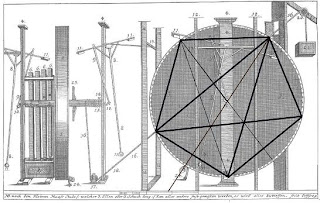According to wikipedia, most ancient scientists were polymaths by today's standards - what does that mean? It means that scientists these days are too specialised. The subjects we are taught are very compartmentalised. To get the best marks we choose those subjects we excel at and not necessarily those we are interested in, because the whole system is based on competition, and we compete, not only against other people but we pit one of our subjects against another.
Many who attend University seek a degree in their best subject because it is the one in which they obtained the highest exam marks. They study to become expert in that field with the result that they know everything (they think) there is to know about it. At first sight this makes sense, but it is to the detriment of a wider general knowledge, and unfortunately there is no advantage, career-wise, in learning about allied subjects and certainly nothing about those which have no connection with it. They are experts within a very narrow field, consequently they know relatively little about matters outside their speciality.
On the other hand, for instance, Leibniz, a member of the Royal Society. invented a calculating machine, wrote an overview of the history of the earth, describing how the planet formed, subterranean fires, and the formation of fossils. He developed an explanation of matter known as Monadology, suggesting that any substances were individually 'programmed' to act in a predetermined way but which could not affect the preservation of free will. He made significant contributions in physics, logic, history, librarianship, and of course philosophy and theology, while also working on ideal languages, mechanical clocks and mining machinery. He also studied numerous aspects of Chinese culture!
Leibniz was of course, the most famous supporter of Johann Bessler. Another supporter, almost as celebrated, was Christian Wolff, a rationalist polymath and an influential leader of the early German Enlightenment. He pioneered socio-economics, and made lasting contributions to international law. He revived ontology as a systematic framework for the empirical sciences. He studied and taught mathematics and researched military architecture, natural history, and natural philosophy. He had a natural aptitude for mechanics according to one correspondent and of course he too, was a member of the commission which examined Bessler's Merseberg wheel- and of the Royal Society.
These men who examined Bessler's machine were not just experts in a particular field but were people whose knowledge spanned a significant number of different subject areas, giving them a wider knowledge base upon which to form an opinion about Bessler's machine. They were able to make the intellectual connections and accept the evidence of their eyes in a way that today's 'experts' would find challenging.
To have an in-depth knowledge about one aspect of a particular subject may deprive one of its wider ramifications, not through lack of general knowledge so much as an excess of knowledge about that one aspect. In trying to solve Bessler's wheel, we here, seek answers from a more generalised knowledge base, examining every possibility and excluding nothing, whereas 'experts' know that Bessler's claims are not possible because that is what they have been taught and they are either reluctant or incapable of re-examining their 'knowledge'. This may be due to peer pressure, fear of ridicule, or simply a feeling of smug moral superiority derived from a sense that their beliefs, actions, or affiliations are of greater virtue than those of the average person.
But not all 'experts' need to be highly educated scientists. They may have a prolonged or intense experience through practice and education in a particular field. In specific fields, the definition of expert is well established by consensus and therefore it is not necessary for an individual to have a professional or academic qualification for them to be accepted as an expert. In this respect, a shepherd with 50 years of experience tending flocks would be widely recognized as having complete expertise in the use and training of sheep dogs and the care of sheep. I consider myself something off an expert with regard to Bessler and his claims but I have no university degree in either mechanics or history, just the experience of forty years of engineering. I do not know that Bessler's wheel was impossible therefore I continue to work at it.
Thanks as ever to wikipedia. :)
JC
10a2c5d26e15f6g7h10ik12l3m6n14o14r5s17tu6v5w4y4-3,’.

.jpg)





